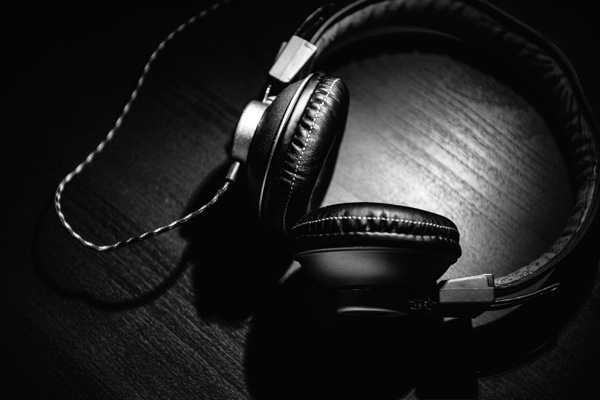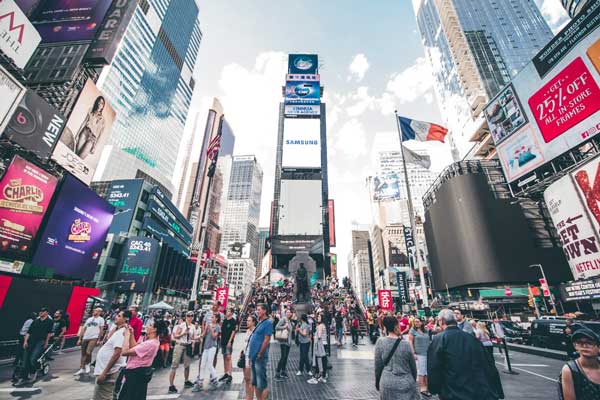
Noise pollution is one of the biggest factors in loss of productivity in a workplace. Noise pollution not only affects an organization’s bottom line, but it also affects employee satisfaction and morale at work.
Combating noise pollution has become especially important, and somewhat more difficult, in open-area office spaces, which are becoming more common in a lot of organizations. As the team at ADI Acoustics notes, private offices are becoming a thing of the past, and workstations are getting smaller in an effort to make more room for collaborative workspaces.
While collaboration is essential for any business, open workspaces can inhibit collaborative productivity because of the noise pollution. According to Steve Johnson, founder of ADI Workplace Acoustics, about 70 percent of employees in open work areas state that the biggest distraction to their day is coworker conversation.
Additionally, keyboard clicks, ringing phones, and footfalls are all noise pollutants that workers deal with on a daily basis. Further, the lack of privacy perceived by employees in open workspaces inhibits their productivity by increasing their workplace dissatisfaction.
To overcome this obstacle to productivity, organizations must pay close attention to the acoustics of their office spaces and find solutions for reducing noise pollution. Those solutions lie within the ABCs of acoustic control: Absorb, Block and Cover sounds.
The ABCs of Acoustic Control
As acoustics specialist Dr. Gary Madaras at ROCKFON in Chicago points out, “The acoustic goal in open office spaces is not sound privacy, but instead to attenuate distracting noises such as conversations as much a possible so that only a limited number of people are negatively affected.”
Anyone designing office space for maximum productivity through reduction in noise pollution needs to plan to absorb, block and cover sounds that could be distracting to workers. As Niklas Moeller at K.R. Moeller Associates Ltd. explains
- absorption is essential for reducing reverberation and noise levels,
- blocking is needed to stop the spread of noise across work areas
- and covering refers to installing a sound-masking system to control the background sound level in the workplace.
To achieve maximum acoustic control in a space, noise reduction plans need to address each of these three areas.
Absorbing Sounds
Sound-absorbing materials are key for reducing noise in open areas. In any space that is designed with mostly hard surfaces, adding soft materials can dramatically reduce the level of noise in the space.
The list of possible absorptive materials is almost endless — acoustical ceiling tiles and clouds, carpeting, objects and art, wall partitions and panels, baffles, plants and greenery, and much more. Each of these solutions for absorbing sounds will effectively reduce noise pollution. It is up to designers and facilities managers to figure out the best solutions for each space.
This tends to be the most expensive part of optimizing the acoustics in a workspace because it requires updating structures. But the investment is worth it, as absorbing sounds also has the biggest reward for employee productivity.
Blocking Sounds
Blocking sounds from distracting occupants is also necessary. To do this, organizations are providing dedicated loud and quiet spaces to suit employee needs. As Christopher Calisi and Justin Stout at Cambridge Sound Management point out in their article for Harvard Business Review, quiet rooms allow employees to focus on their work while the loud rooms are good for heated group discussions so as not to distract others. Both keep noise to the contained space.
Covering Sounds
Sound masking is a popular solution to noise pollution. While it may seem counter-intuitive to create noise in a space that is seeking to reduce noise, low-level ambient or white noise is successful in reducing distractions due to noise, according to Cambridge Sound Management. Conversation is the noise that is most distracting. Ambient noise provides a different noise that interferes with a person’s ability to focus on outside noises or conversations.
Moeller explains that sound-masking systems create a comfortable sound akin to soft airflow that is distributed throughout a workplace via loudspeakers typically installed above or within the ceiling. This is usually the most cost-effective of the solutions for creating an optimal acoustical environment.

10 Companies With Innovative Solutions For Optimizing Acoustics In The Workplace
Searching for the right solutions for your workplace acoustics can be overwhelming. We’ve put together a list of companies that offer innovative and unique products for you to consider using when searching for workplace acoustic solutions.
Acentech
Acentech has acoustic simulation and rendering technology called 3DListening. This tool allows Acentech’s customers to listen to simulated sound in a designed space prior to construction. This lets them make decisions in advance about features that would affect acoustics such as material choices, loudspeaker systems, sound isolation and mechanical noise.
BASWA Acoustic
Baswa acoustic offers BASWA Phon, a sound absorbing plaster systems that can be used during construction to build acoustics controls into the structure of a building. The system is applied to substrate and then coated with the BASWA Phon coating, absorbing sound by reducing reverberation time of sounds. It has a noise reduction coefficient (NRC) of 1.05, which means it is completely absorptive.
Acoustical Surfaces, Inc.
Acoustical Surfaces, Inc. has an acoustically transparent paint called SonoKote. This breathable paint layer allows sound to move freely in close space. The sound waves pass through the paint to the sound-absorbing materials underneath it, helping to reduce noise pollution.
FIIL Technology
FIIL Technology’s wireless noise-canceling headphones are the next generation of headphones. In 2016, the company launched a successful Kickstarter campaign for a new line. These headphones provide 3D audio, voice search, touch control and audio-filter technology, which allows users to choose from four different audio modes.
There are two different models, Diva and Diva Pro, that offers solutions based on user’s needs.
Speech Privacy Systems
Speech Privacy Systems’ VoiceArrest Sound Masking System uses sensors and a patented algorithm to automatically adjust the volume and frequency of background, ambient sounds based on sound levels in the space. The system simulates the sounds of a quiet HVAC system to cover conversations and distractions.
BuzziSpace
BuzziSpace specializes in creating stylish acoustic furniture that can be used to decorate your offices. A couple of the more unique pieces are the BuzziHood and the BuzziBlinds. BuzziHood is a wall-mounted acoustic telephone booth that can provide privacy for phone calls. BuzziBlinds are freestanding, rotating acoustical blinds that allow employees to open or close their space based on the level of privacy they need.
Agile Acoustics
Agile Acoustics focuses on sustainability in their Agile Panel products by using recycled water bottle plastic to make their panels, each using approximately 70 water bottles. They also take the panels one step further with their SwapPrint acoustic wall panels, which allow you to change out the custom artwork on the panel any time while still maintaining noise reducing capabilities.
Sound Management Group
Sound Management Group’s SoundElite acoustical blinds and banners are sound-absorbing window treatments that absorb 80 percent of articulate speech frequencies in the closed position and 35 percent in the open position. They are compatible with all major vertical blind track systems, so they won’t require a hardware overhaul.
Framery
Framery manufacturers sound-proof phone booths and meeting pods for open office spaces. They provide private, quiet spaces that eliminate conversation distractions. The Framery O phone booth is for individual phone calls and video conferences, while the Framery Q is a meeting space pod that is ideal for two people but can accommodate more depending on configuration. Each space eliminates noise for the greater office area and provides privacy for the users.
Steelcase
Steelcase has created Susan Cain Quiet Spaces using their V.I.A. (Vertical Intelligent Architecture) technology. These quiet spaces offer acoustic privacy and comfortable settings which are designed for workers who need privacy and a space in which to focus. Each space can be customized to meet any workplace’s needs.

A Quieter, More Productive Workplace
While open workspaces are becoming more common, these open floor plans aren’t always the most conducive to employee productivity because of noise pollution. Overcoming the acoustical issues of open spaces isn’t quick, easy or cheap, but it is worth the investment to create a quieter environment that allows workers to focus on their tasks. It’s never too late for organizations to audit their buildings for optimal acoustic performance.
Credits:
David AlacarazCorey Blaz
Alyibel
